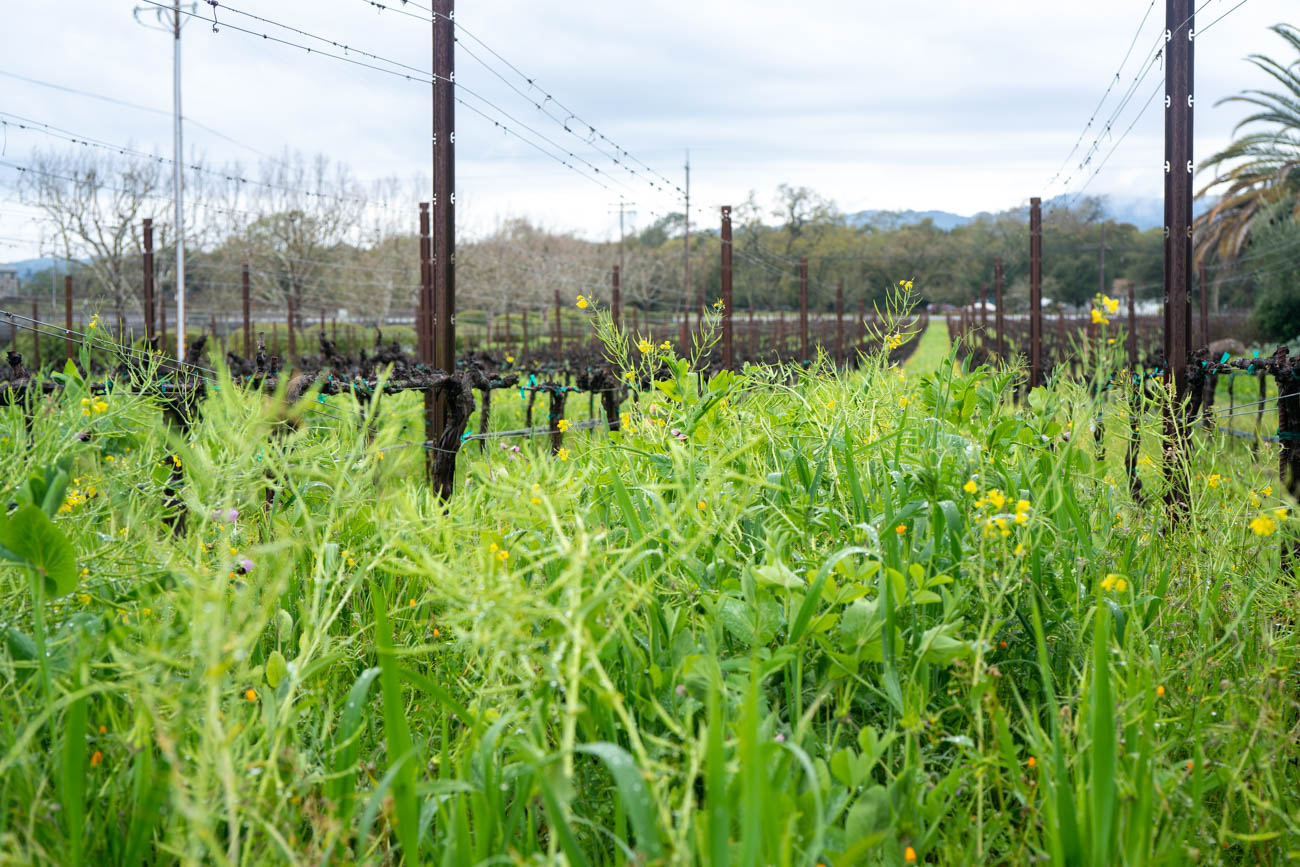Winery Blog
March Vineyard Update
March Vineyard Update
The long wait is over, and our winemaker Bertus expects bud-break in the next two or three weeks. While we patiently wait for the growing season to officially kick-off. We wanted to update you on what we have going on in the vineyard this spring.

As you might know, Napa Valley is renowned for producing some of the world's finest wines. Our region's unique terroir, climate, and soil provide ideal conditions for growing premium wine grapes. However, managing vineyards in Napa Valley is not without its challenges. To maintain the quality of the soil, control weeds, and promote biodiversity, we have turned to something called "cover crops" to plant amongst the vines.

The benefits of planting cover crops are numerous. For one, they help control soil erosion by reducing water runoff and increasing soil infiltration, which has been a blessing during these last few uncommonly rainy months. Cover crops also improve soil health by adding organic matter, fixing nitrogen, and improving soil structure. Additionally, they can suppress weeds, which reduces the need for herbicides and lowers production costs. Cover crops can also provide a habitat for beneficial insects and other wildlife, which helps to promote biodiversity in the vineyard ecosystem.

For this year, we planted every other row with a variety of beneficial cover crop, made from this seed mix:
35% Forerunner Triticale
10% Cayuse Oats
12.5% Dundale Peas (flowering)
12.5 % Magnus peas (flowering)
5% Lana Vetch (flowering)
5% Purple Vetch (flowering)
3% Crimson Clover (flowering)
15% Brassica Blend (Mustards, Radishes) (flowering)
Forerunner Triticale is a hybrid grain that provides excellent ground cover and suppresses weeds. Brassica Blend, which includes a variety of brassica plants like mustard and radish, helps to break up soil compaction and improves soil health. Dundale Peas and Magnus peas are legumes that fix nitrogen in the soil, which can reduce the need for synthetic fertilizers. Overall, this mix of cover crops helps to promote soil health, reduce erosion, and promote biodiversity in the vineyard ecosystem, all while maintaining the quality of our grapes. It also makes our James Cole estate vineyard look beautiful during these early spring months.

Make sure to check back in a couple of weeks as we get ready to kick off the 2023 growing season.
Recent Posts
-
July 12, 2024
-
January 8, 2024
-
October 30, 2023
-
July 18, 2023
-
June 2, 2023
-
May 22, 2023
-
April 18, 2023
-
March 30, 2023
-
February 27, 2023
-
January 18, 2023